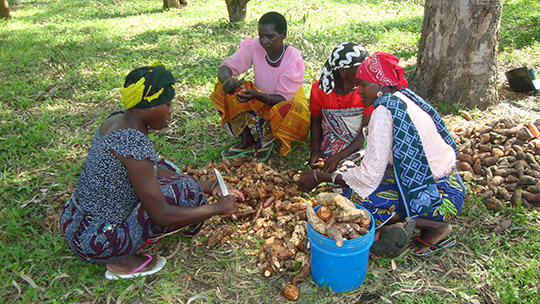Adding Colour to the Plate
Adding more colour to the plate increases variety in a household's diet and helps curb malnutrition.

Having enough food to eat is just one step towards ensuring food security. Without a varied diet containing a range of valuable nutrients, vulnerable populations will continue to be at risk of chronic malnutrition and may not be able to reach their full development potential.
In Tanzania, where the majority of poor households consume an unbalanced diet based mainly on cereals, chronic malnutrition is a serious health problem. And although there has been striking improvement in many national health indicators over the last decade, nutrition status has remained largely unchanged.
Helen Keller International (HKI), with Irish Aid support, recognises that "adding more colour to the plate" increases variety in a household's diet and helps curb malnutrition. In Mwanza, Northern Tanzania, HKI have been encouraging households to grow and prepare their own micro-nutrient rich, indigenous vegetable crops. HKI organises community events and cooking demonstrations to highlight the benefits of growing and preparing vegetables and to change dietary behaviours.
Some participants have been able to save their seeds and sell surplus produce for an additional income. Even small earnings allow mothers to purchase even more varied and nutritious food, diversifying diets even further.
By building on the evidence and learning from the experience in Mwanza, it is hoped that the model will be scaled up to address hunger and ensure food security throughout Tanzania in line with the Government's National Nutrition Strategy.